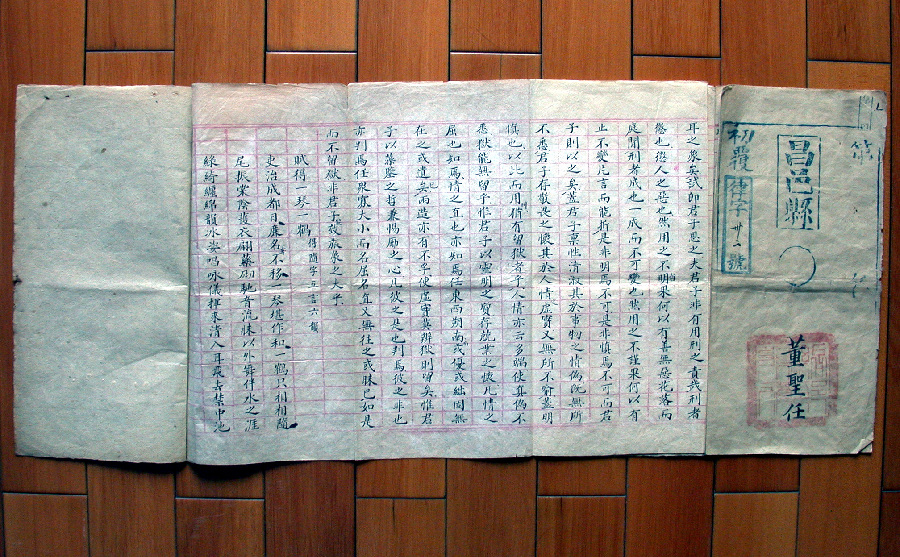 |
|
This photo shows a test paper for the keju exam in the Qing Dynasty, which was found in Suichuan county in Jiangxi province. [Photo by Li Fangyu/Asianewsphoto]
|
What did it test?
The keju examinations were mainly based on classical literature and philosophy. Poetry was very important in earlier keju exams, and later keju versions focused more on essay writing.
During the Ming and Qing dynasties, the tests mainly concerned the "Four Books" - Great Learning, Doctrine of the Mean, Analects and Mencius - and the "Five Classics" - Classic of Poetry, Book of Documents, Book of Changes, Book of Rites and Spring and Autumn Annals.
All candidates had to write a composition explaining ideas from those books – using a particular form and structure, which was called Eight Part Essay. Two sentences were required at the start of the composition, concerning the main idea of the title, which was called "to clear the topic".
Several sentences were then required to clarify the meaning of the topic, which was called "to continue the topic". The remaining part centered on the topic in the form of parallelism and antithesis. The ideas had to conform to the Four Books and the Five Classics. Liberal ideas were unacceptable.
The exams also focused on more practical matters, such as policy questions concerning taxation and statecraft.
